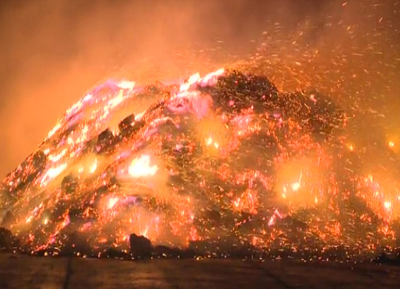
Overview
Students will utilize a calorimeter to measure the energy released in the following exothermic reaction:
Ca (s) + 2 H2O (l) → Ca(OH)2 (aq) + H2 (g)
The chemical reaction occurs when solid calcium metal is added to water, so the reaction can be set up to take place inside the calorimeter. Students will use three different quantities of calcium that they must test a minimum of three trials each. They will calculate the heat absorbed by the solution using the formula
qsolution = msolution • Cs solution • ∆T
msolution = mass of water + mass of calcium
Cs solution = specific heat of water
∆T = final temperature inside calorimeter – initial temperature inside calorimeter
The different quantities of calcium used will allow them to more accurately calculate the enthalpy of the reaction in kilojoules per mole.
This lab will require students write a formal lab report.
Underlying Pages
-
0. Student Directions -
Preview as Student
-
1. Enthalpy of Reaction -
Preview as Student
-
2. Calorimetry Lab Design Part 1: Reactant Amounts -
Preview as Student
-
3. Calorimetry Lab Design Part 2: Procedure -
Preview as Student
-
4. Calorimetry Experiment 1 -
Preview as Student
-
5. Calorimetry Experiment 2 -
Preview as Student
-
6. Calorimetry Experiment 3 -
Preview as Student
-
7. Enthalpy Calculations -
Preview as Student
Standards
Next Generation Science Standards
- Physical Science
Computational Thinking in STEM
- Data Practices
- Modeling and Simulation Practices
- Systems Thinking Practices
